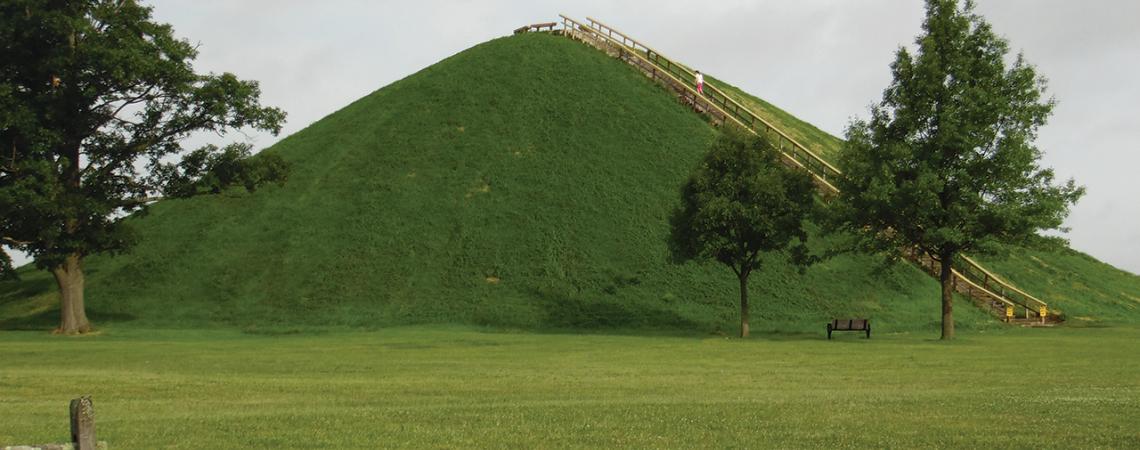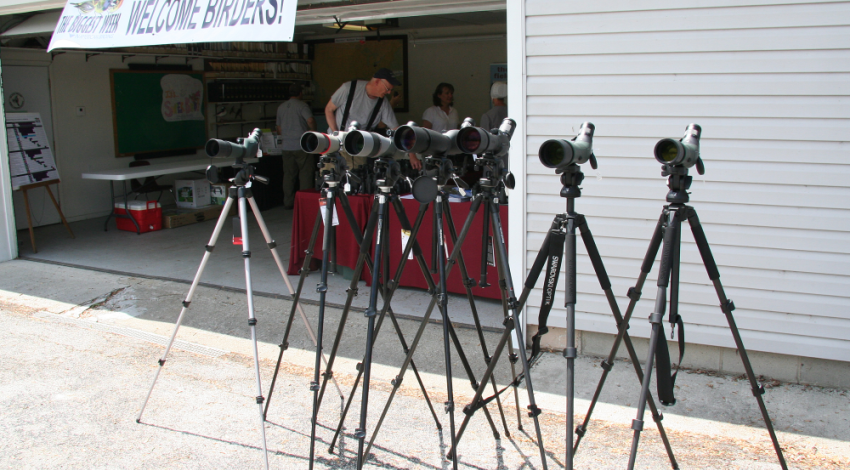Photo by Damaine Vonada
Location: On a 100-foot-high bluff near the Great Miami River in Miamisburg Mound Park.
Provenance: Originally measuring 68 feet or more in height, the conically shaped Miamisburg Mound was built by members of the Adena culture, who flourished in what is now southern Ohio from approximately 800 B.C. to 100 B.C. The Adena — and later, the more sophisticated Hopewells — built thousands of earthworks near the Ohio River and its tributaries, and it’s believed that the Miamisburg Mound was constructed layer by layer as a burial place. “The Miamisburg area was probably an Adena gathering site,” says Miamisburg Historical Society curator Gary Petticrew. “We don’t know when they started the Miamisburg Mound, but it probably took hundreds of years to reach its zenith.”
Pioneer Jacob Lawres purchased acreage containing the mound in 1806 and subsequently sold it to John Treon, who appreciated the mound’s historical and archeological significance. Although most ancient earthworks were leveled to make way for farms, quarries, roads, and factories during the 1800s, Treon and his descendants protected the Miamisburg Mound. In 1920, the Treon family sold it to Dayton industrialist Charles Kettering, who later donated the mound and 37 surrounding acres of parkland to the state historical society.
The Civilian Conservation Corps constructed stone steps as a public works project in the 1930s, allowing visitors to ascend from the base to the top of Miamisburg Mound.
Significance: Despite an 1869 excavation attempt that likely diminished its height to 65 feet, the Miamisburg Mound remains Ohio’s tallest — and one of the nation’s largest — conical earthworks. With 116 steps leading to an observation platform at its summit, the mound also is famous for its panoramic views of the Great Miami River Valley.
Currently: The Ohio History Connection owns the Miamisburg Mound, the city of Miamisburg maintains Mound Park, and the Miamisburg Historical Society organizes tours and special events.
It’s a little-known fact that: Two pioneering archaeologists from Chillicothe — newspaper editor Ephraim Squier and physician Edwin Davis — surveyed the Miamisburg Mound for their landmark scientific research study, Ancient Monuments of the Mississippi Valley. Released in 1848, Ancient Monuments was the Smithsonian Institution’s debut publication, and its very first figure depicts the “Great Mound at Miamisburg, Ohio."









